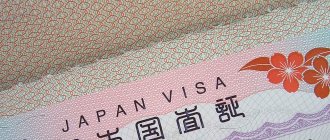Powerful, inimitable sound
Taiko drums are an integral part of Japanese cultural tradition.
The sound of taiko fascinates with a powerful, vital full-sounding sound that penetrates into the most hidden corners of the soul. But if you just beat the drum as hard as you can, you won’t achieve such a sound. Taiko is a musical instrument, so it is important to get in time, keep the tempo, and play literally with your whole body - just like when singing. Only then can a deep and expressive sound be achieved.
Playing taiko is a kind of dance. All over the world, audiences pay attention to the distinctive feature of playing this percussion instrument: the combination of a powerful sound that takes your breath away and a dynamic manner of performance when the musician’s whole body is in motion. Critics consider the most spectacular and impressive musical performance to be the performance of a kumi-daiko (taiko ensemble), when a group of musicians works measuredly and harmoniously, as a single organism.
"Natsumatsuri"
Taiko were brought to Japan by travelers who crossed the Asian continent. The oldest remains of a taiko drum discovered in Japan date back to the Jomon period (10,000 to 300 BC).
In the old days, taiko were used as a signaling device to alert members of the community about danger, general work, etc. In agriculture, they were used to repel pests, and in military affairs –
to raise morale and intimidate the enemy. On the other hand, taiko also had a ritual purpose: they were played during religious holidays and ceremonies, such as the Bon-odori funeral dance, amagoi prayer for rain, etc. Taiko drums occupied an important place in the life of traditional Japanese society.
Little drummer girl at a city festival
Over time, taiko were increasingly seen on stage, being used in Kabuki theater performances and other traditional performing arts. And the relatively new tradition of collective performances with taiko, so widespread these days, originated at the beginning of the twentieth century.
There are several varieties of Japanese taiko drums. The most classic type is nagado-daiko, which means “long-body drum.” It is often used in Shinto and Buddhist ceremonies, which is why it received its second name, miyadaiko (temple drum). The body of a nagado-daiko drum is typically cut from a single piece of dense wood (usually zelkova) and covered at both ends with cowhide, which is secured to the body with metal rivets. Other varieties of taiko include high-pitched shime-daiko snare drums (often used in the hayashi ensembles that accompany Noh performances), odaiko bass drums, okedo-daiko hanging drums, etc. The skin is a very important part of taiko, due to its thickness The timbre of the drum depends on the processing method.
Japanese Taiko drums
When talking about Japanese music, the first thing that comes to mind are the now widespread J-Pop groups, however, if you dig deeper into history, taiko drums clearly stand out from the general background.
. The fact is that they were used not only in music, but also in religious rituals, as well as in military affairs.
So what is taiko - translated this word means “big drum”
. It is generally accepted that they came to Japan from China and Korea in the 6th century during the Kofun period, after which they were made by local artisans. There are many varieties of taiko, but two main ones can be distinguished: bë-daiko and shime-daiko. In the first case, the membrane is attached rigidly without the possibility of adjustment, and in the second it is attached with cords or screws, which allows you to adjust the timbre of the drum. Although due to Japan's humid climate this is not always possible. The skin of a bull, which is stretched over a single piece of hollowed out wood, gets wet and sags, so it makes sense to make any adjustments only before the performance itself.
Of course, this instrument was not always musical; previously it was used to notify the community, signaling danger or warning about general work.
In agriculture, taiko helped farmers scare birds and animals away from their crops. Well, of course, large drums were indispensable during battles, frightening enemies and encouraging soldiers.
Taiko is so deeply woven into Japanese culture.
that are even mentioned in ancient myths.
So, according to legend, the sun goddess Amaterasu was angry with the world and locked herself in a cave, taking away the sunlight from people.
But the goddess of dawn outwitted her, luring her out of the cave with the help of a loud rhythmic dance on an overturned sake barrel. It is not surprising that taiko have become an integral part of religious rituals. At special ceremonies one or two drums could be played, but this was only allowed to trained drummers who were approved by the priests.
But today in music there are entire kumi-daiko ensembles specializing in taiko.
They consist of many drums at once, which build rhythm and tempo in such a way as to complement the overall composition, striking listeners with their sound. Typically, taiko is played with sticks called bachi, but there are varieties of hand drums called kotsuzumi and ootsuzumi. They are made of cherry wood, and the edges are covered with parchment or cowhide. The tone of such instruments is controlled by a cord stretched between the membranes.
The giant drums deserve special mention, because any self-respecting ensemble should have at least one such o-daiko. Some of them are so huge that they simply cannot be transported. Such specimens are made from trees that are more than a hundred years old, so they are kept in temples and shrines. For example, the largest drum, according to the Guinness Book of Records, is located in the city of Tsuzureko.
To be more precise, there are two giants there at once: one with a diameter of 3.71 meters and weighing 3 tons, built in 1986, and the second with a diameter of 4.52 meters and weighing 3.5 tons, built in 1992.
Local residents play them during holidays and festivals, and the rest of the time these titans are kept in the storage of The Great DrumMuseum
, which already has more than 150 exhibits from all over the world.
ALL NEWS
Musical performance: Japanese taiko drum ensembles
Kojima Chieko from Kodo (Kojima Chieko) ©Karen Steains
Taiko Mastery
It is actively developing as a form of performing art.
In almost all regions of Japan, the number of organizations (schools, enterprises, etc.) on the basis of which taiko
. Many professional groups have emerged, and some of them are becoming increasingly famous not only in Japan, but also abroad.
“Kodo” by Nakagome Kenta ©Maiko Miyagawa
Two flagships of this new direction are the incredibly popular groups “Ondekoza” and “Kodo” (links in English). The Kodo ensemble was founded on Sado Island (Niigata Prefecture) in 1971. Ten years later, in 1981, the international debut of this group took place at the Berlin Festival (Berliner Festspiele). Since then, Kodo musical performances have been held more than 5,500 times in 47 countries. The ensemble's staff is replenished by graduates of the so-called “farmstead” in Sado, located within the walls of an abandoned local school. The apprenticeship lasts two years, during which the apprentices live in a commune and undergo very rigorous training. After the first two years, they can choose a specialization and then complete a specialized internship for another year. And only after the end of the third year they can become permanent members of the team. Currently, Kodo employs twenty-nine permanent performers who take part in musical performances: twenty-three men and six women (as of April 2015).
Kodo players impress not only with their brilliant taiko playing skills, but also with their excellent physical condition, which they owe to a special training system that includes intense physical exercise. Entire photo albums are devoted to the physical beauty of these musicians, widely sold in Japan and abroad.
"Ondekoza - From the Foot of Fuji to the World" (courtesy of the Ondekoza Group)
See also:
Feel like a Tokyoite - leisurely walks around Asakusa, Drum Museum: a meeting place with drums from all over the world
Banner photo: Kodo Group, Nakagome Kenta ©Maiko Miyagawa
Japanese cuisine | Sushi | Rolls | Sashimi
Hello to all susi-college readers!
Today you will find an unusual article on the topic of Japanese traditional music, namely, we will tell you what taiko drums are and what beautiful, impulsive music with character they play. First of all, it is important to note that when performing a musical composition on taiko drums, two things are important: the music itself and the movements of the drummer. Like everything Japanese, taiko playing is strictly thought out and attention to every detail is paid. This kind of music is not only pleasant to listen to, but also pleasant to watch drummers who move beautifully and apply physical strength to swing their drumsticks. And also, if you are interested in other Japanese music, we recommend listening to the relaxing compositions of the magical shakuhachi - bamboo flute.
What are taiko drums and their history.
It is generally accepted that the instrument itself, the drum, was brought to Japan from Korea or China in the 3rd-9th centuries. And after the 9th century, drums began to be made in Japan by local craftsmen and they began to be called taiko, which is translated from Japanese as a large drum. These drums are actually very large compared to the drums we are used to. Taiko are made from solid wood by hollowing out the core and then covered with a membrane, which is nailed to the wood or tied with special cords.
Taiko drums, drummers and performance.
It is interesting to note that it is not only the impulsive, energetic music that fascinates, but also the drummers themselves, who move beautifully and change places with each other. All this creates a whole show that can be looked at with great interest. Such performances can last from 5 to 25 minutes.
Read more about taiko drums.
Both classical music and Japanese folk music are performed on taiko. Also, drums are divided into types, which differ in the size of the drums, types, installation and sticks, with the help of which the drumming is directly performed. Today there are many performers - musicians and entire groups who play taiko drums. Such musicians often perform not only classical compositions, but also modern ones. Taiko drums have been well modernized and incorporated into modern music, where drums are combined with other instruments and styles of music. For example, there is a modern music group that plays jazz along with taiko.
Also see: Japanese party, chicken roll and Japanese vegetable rice.
And finally, friends, taiko drums and an impressive performance by Japanese music artists. Enjoy and leave your impressions in the form of comments! See you soon…










